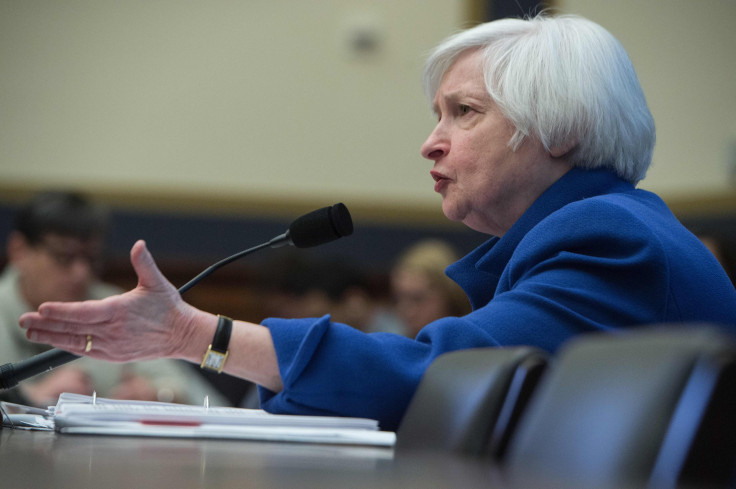Focus Sharpens On Federal Reserve After Hot Inflation Reading

With the calendar full of economic data releases and speeches by economic policymakers next week, investors had been poised to watch the Federal Reserve for clues about the U.S. central bank’s next move, but an unexpectedly hot reading on inflation Friday will further sharpen that focus.
After coming into 2016 with an expectation of three or four interest rate hikes this year, market participants recently were viewing the Fed as likely raising interest rates once, if at all, in light of weak inflation and global volatility.
But Friday’s data showed the core consumer price index (CPI), a measure of underlying U.S. inflation, rose in January by the most in almost 4-1/2 years to a 2.2 percent annualized rate. It drew particular attention as the figure was above the Fed’s 2.0 percent target, although it is not the central bank’s benchmark inflation measure.
The uptick in price pressures has already shifted the market’s expectations about the Fed’s next move.
“The inflation numbers definitely caught the markets off guard,” said Joseph LaVorgna, senior economist at Deutsche Bank in New York. “Last week at this time the market was pricing a 25 percent chance of a rate hike by year-end and now it’s over 40 percent and that’s largely because of [the] stronger-than-expected CPI.”
The dollar rose alongside Treasury yields shortly after the data, as markets saw the higher inflation as nudging the Fed toward tightening policy. The euro hit its lowest level since Feb. 3.
Equity markets have also closely followed expectations on Fed policy. Lower rates tend to support stocks in general, with high-paying dividend names such as utilities gaining investors’ favor. In an environment of rising rates, banks tend to take the lead.
The expectation of higher interest rates has been cited as one of the reasons for stocks having fallen as much as 11 percent this year. The Standard & Poor’s 500 index is down 6 percent so far in 2016, and on track for its third positive week of the year.
The inflation numbers add to recent economic data, including a stronger job market and consumer spending, that will force the Fed to seriously reconsider more rate hikes, said Jim Paulsen, chief investment officer at Wells Capital Management in Minneapolis. “I think what’s happening is that people are starting to put tightening back on the table,” Paulsen said.
Personal consumption expenditures, the Fed’s favorite measure of price inflation, is out next Friday and could confirm or outweigh the trend in the CPI reading. Among other market-moving numbers next week are purchasing managers indexes (PMIs) for the manufacturing and services sectors and two gauges of consumer confidence.
Investors and the Fed could address a decline in earnings, now seen as down 3.7 percent for the S&P 500 in the fourth quarter of last year, and lower outlooks for 2016 as other reasons to keep rates lower for longer.
The incoming data gives more weight to next week’s scheduled speeches from many Fed officials, including Vice Chair Stanley Fischer Tuesday and Federal Reserve Bank of Atlanta President Dennis Lockhart Thursday as markets look for a change in tone. Two Fed surveys of business conditions, Richmond and Kansas City, are also out next week.
“I don’t think the Fed can help stocks; they can only hurt them,” said Wayne Kaufman, chief market analyst at Phoenix Financial Services in New York. “If they came out too hawkish, that can hurt stocks; too dovish can help a little, but not create sustainable investor demand.”
In Fedwatcher parlance, hawks are seen quicker to push for rate hikes than doves.
In a U-turn late Wednesday, Fed voting member and hawkish Federal Reserve Bank of St. Louis President James Bullard said it would be “unwise” to raise rates further given U.S. inflation data and global volatility. He speaks Wednesday in New York, where he will field questions from the media.
The Fed’s policy-setting committee next meets in Washington March 15 and 16, with a statement followed by a news conference with Chair Janet Yellen.
© Copyright Thomson Reuters 2024. All rights reserved.





















